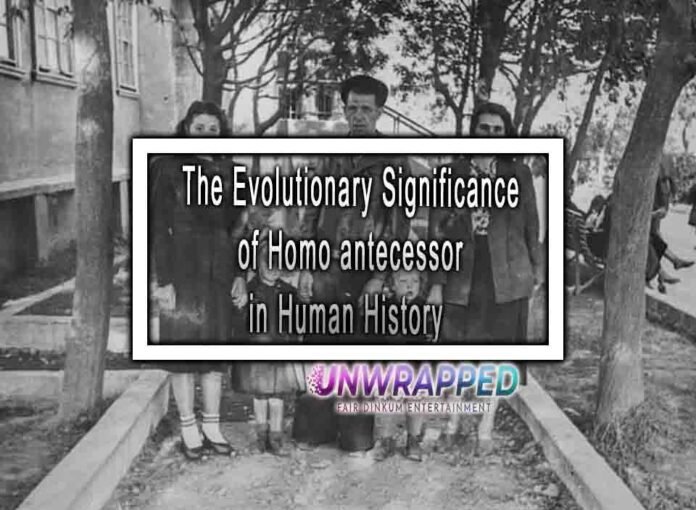Homo antecessor is an extinct hominin species that lived in Europe during the Lower Pleistocene, approximately 1.2 million years ago. The significance of Homo antecessor lies in its potential role as a transitional species and its contribution to our understanding of human evolution. Here are key aspects of the evolutionary significance of Homo antecessor:
1. Transitional Nature:
- Bridge Between Hominin Groups: Homo antecessor is considered by some researchers as a potential bridge between earlier hominins, such as Homo habilis and Homo erectus, and later species like Homo heidelbergensis. Its characteristics display a mix of primitive and derived traits.

2. Cranial Characteristics:
- Brain Size: Homo antecessor had a relatively large brain size compared to earlier hominins. The average cranial capacity falls within the range of 1,000 to 1,200 cubic centimeters, approaching the lower end of the range seen in modern humans.
- Facial Features: The facial features of Homo antecessor include a projecting face, large orbits, and a prominent brow ridge.
3. Dental Morphology:
- Molar Size: Homo antecessor exhibited relatively small molars, a characteristic more similar to later Homo species than to earlier hominins. This suggests dietary adaptations and changes in food processing compared to earlier hominins.
4. Tool Use and Adaptations:
- Tool Use: While the archaeological record associated with Homo antecessor is limited, some stone tools have been attributed to this species. Tool use is considered a significant aspect of hominin behavior and adaptation.
5. Postcranial Skeleton:
- Bipedalism: Like other members of the Homo genus, Homo antecessor was bipedal, walking on two legs. Bipedalism is a defining characteristic of hominins and is linked to their adaptation to diverse environments.
6. Cultural and Social Aspects:
- Cannibalism Hypothesis: Some researchers have suggested evidence of cannibalism associated with Homo antecessor, based on cut marks found on fossil remains. This raises questions about social behavior, group dynamics, and potential cultural practices.
7. Geographic Presence:
- European Distribution: Homo antecessor is primarily known from Atapuerca in northern Spain, suggesting a European presence during the Lower Pleistocene. The geographic distribution contributes to our understanding of hominin dispersals and adaptations to different environments.
8. Role in Hominin Evolution:
- Precursor to Homo heidelbergensis: Homo antecessor is hypothesized to be a precursor to Homo heidelbergensis, a species with a more established presence in the fossil record. Understanding the transition from Homo antecessor to Homo heidelbergensis provides insights into the evolutionary trajectory leading to later Homo species.
9. Continuity and Discontinuity:
- Debates in Taxonomy: The classification and relationship of Homo antecessor to other hominins are subjects of ongoing debate. Some researchers propose that it may represent an early European population of Homo erectus, while others argue for its status as a distinct species.
10. Timeline and Extinction:
- Temporal Range: Homo antecessor existed around 1.2 million years ago. The reasons for its eventual extinction and the factors contributing to the emergence of later Homo species are areas of continued investigation.
Homo antecessor occupies a critical position in the timeline of human evolution, providing a glimpse into the transitional stages leading to later Homo species. Ongoing research and new discoveries in sites like Atapuerca contribute to refining our understanding of Homo antecessor’s place in the complex mosaic of hominin evolutionary history.











